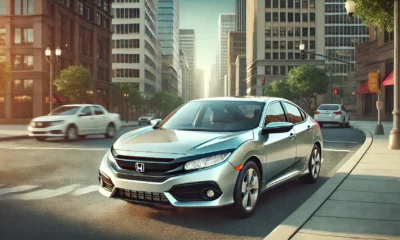TECH
Do’s And Don’ts of Photography Logo For 2024

Visual depiction plays a vital role in remembering any information. Many studies show that imagery content facilitates memory processes that are familiar and associated with it. Therefore, photography logos can help to reduce the customer acquisition cost.
Moreover, people are more likely to buy from familiar brands. If you appropriately craft photography logos, they can effortlessly increase the income stream.
Photography logos are the best source for aesthetic output that may help recollect the information and have a great potential to build trust among its consumers. It can open up avenues for potential clients. So, if you want a guideline to create a perfect logo in 2024, continue reading. We will list the do’s and don’ts to create an ideal logo for you to better connect with your audience.
Do’s:
Many ideas are available on the internet for your inspiration. However, if you want to flex your creative muscles and want an original piece to design a photography logo, don’t worry! We are here to provide you with the list of do’s you need to get your hands on.
1. Know Your Audience:
Market research and surveys sound like a tedious task. Many may find it bland since it is an overused term. It is a great way to connect with your audience, though. Creating a logo that resonates best with your consumer needs is the primary yet powerful tool to stand out in this cutting-edge competition.
You can start by asking specific questions. What are the most essential elements you want to see in our brand? What hues and schemes attract you more? What are your values?
These are some of the few questions you can ask your audience to get a clear picture of what target audiences are more inclined to.
For example, an audience chanting the mantra to limit fast fashion will feel better aligned with a brand that promotes sustainable fashion. Henceforth, incorporating environment-related elements like color and image will be a better way to connect with your audience.
2. Make It One Of A Kind:
During this competitive market, creating a unique logo is a challenging hurdle to overcome. Undeniably, all big companies started afresh. It may seem difficult initially, but when you convey your brand message through a photography logo, adding a dash of emotion, you get an unmistakable design that speaks volumes across the market.
For example, they are adding 3D elements like the one you see in the Toyota logo – though not a photography logo – which gives an advantage over their competitors. The logo also has hints of reflections, showing a natural creative mind behind it.
While creating a logo, it must reflect an ever-green design. The best logo is one that is unique and occasionally requires any change.
3. Let’s Get The Creativity Done:
Photography Elements: Here, the real fun begins for all creativity enthusiasts. When adding an image, you can experiment with as many photography samples as you want. There are certain limitations to this creativity, though. Think of simple yet powerful elements that do not overshadow the shot and still convey the meaning through that picture.
Keep It Simple: Less is more! It fits perfectly well for designing a photography logo for your brand. Using simple designs and color schemes gives a sense of clarity while reflecting professionalism and style.
Use Colours Wisely: Every color conveys a message that aligns with viewers’ emotions. Therefore, it is better to understand color psychology. Here is a quick tip: create variations with different colors and place them on various platforms of your brand to match the consistency across brands.
Scalability: It is not only about the color but also the overall design, which should retain the actual meaning and design even when on a billboard. It should be legible in all sizes; even so, the details remain intact, even on a small surface.
Don’ts:
It may sound effortless for people to keep specific points at their fingertips and start creating a photography logo for a brand. There are a few aspects that you need to keep in mind to avoid the risk of a failed logo design.
Logos with poor designs can cost you money and give a wrong impression of your brand. One such example is the design of the 2012 London Olympics, which reflected nothing more than a girl sitting at a computer.
1. Lacking A Process For Designing Logos:
You cannot deny the importance of planning and brainstorming before designing a logo. It is always better to follow a process to avoid any shocking results for which you are also unprepared at the end.
One of the main reasons is the need for more robust planning that comes in the way of a successful designer. Therefore, the best idea is to create a set of stages or phases you like to comprehend for ethical working.
Creating a plan also helps to save a lot of time, especially when you need to go back and redo specific changes in your design.
2. Don’t Use Stock Images Or Clip Art:
As reiterated earlier, images added to the logo should reflect what you want to say to your customer. Therefore, adding a stock image or picture taken from Google images will not do it justice.
Moreover, photography logos from these images are usually of a different quality than your brand may demand. It will eventually cause damage rather than help while you are trying to make an impression in the market.
Therefore, just take it as an opportunity to flex your creative muscles and develop an original idea that marks your talent in the industry.
3. Using the Wrong Logo Design Software:
Choosing the right software for editing is as vital as having the correct skill set for any kind of designer.
Though there are many software in the market, the most renowned software family, which many designers call an amateur tool, is Adobe. The reason for this lies in the varied number of features it offers. Using it in the best way possible is in the hands of a designer.
Even after the platitude of options available on the internet, Adobe Photoshop is still the number one choice of many creators today.
You can try different software and experiment in any way possible. The point here that needs your attention is that software is vector-based. Therefore, your work shows both creativity and professionalism simultaneously.








